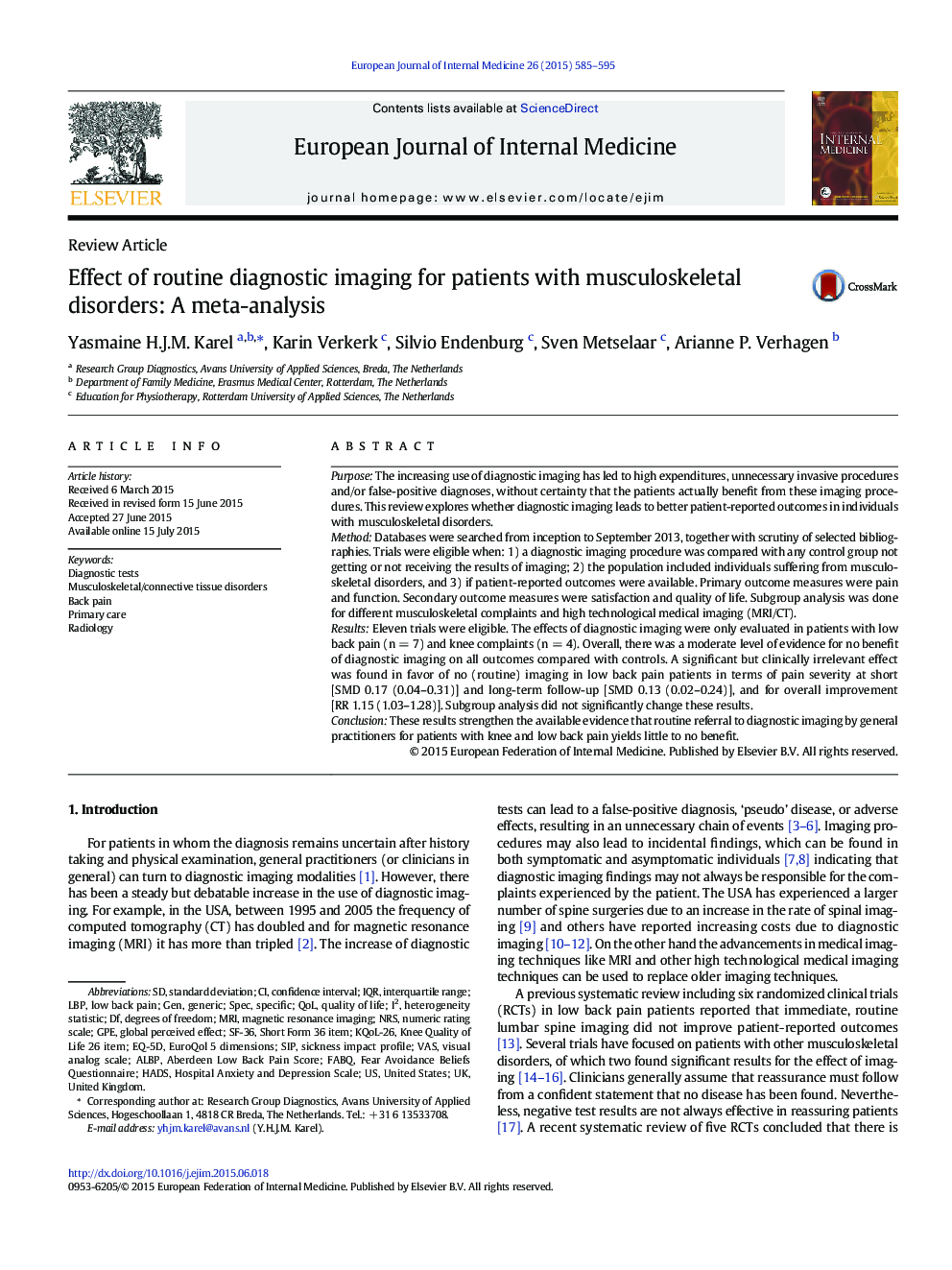| کد مقاله | کد نشریه | سال انتشار | مقاله انگلیسی | نسخه تمام متن |
|---|---|---|---|---|
| 3466141 | 1596542 | 2015 | 11 صفحه PDF | دانلود رایگان |
• Routine imaging does not yield beneficial effects in knee/low back pain.
• Clinicians should avoid imaging when serious underlying conditions are ruled out.
• Clinical decision rules should be used in patients with traumatic knee complaints.
• Imaging can be used in non-traumatic knee complaints if conservative treatment fails.
PurposeThe increasing use of diagnostic imaging has led to high expenditures, unnecessary invasive procedures and/or false-positive diagnoses, without certainty that the patients actually benefit from these imaging procedures. This review explores whether diagnostic imaging leads to better patient-reported outcomes in individuals with musculoskeletal disorders.MethodDatabases were searched from inception to September 2013, together with scrutiny of selected bibliographies. Trials were eligible when: 1) a diagnostic imaging procedure was compared with any control group not getting or not receiving the results of imaging; 2) the population included individuals suffering from musculoskeletal disorders, and 3) if patient-reported outcomes were available. Primary outcome measures were pain and function. Secondary outcome measures were satisfaction and quality of life. Subgroup analysis was done for different musculoskeletal complaints and high technological medical imaging (MRI/CT).ResultsEleven trials were eligible. The effects of diagnostic imaging were only evaluated in patients with low back pain (n = 7) and knee complaints (n = 4). Overall, there was a moderate level of evidence for no benefit of diagnostic imaging on all outcomes compared with controls. A significant but clinically irrelevant effect was found in favor of no (routine) imaging in low back pain patients in terms of pain severity at short [SMD 0.17 (0.04–0.31)] and long-term follow-up [SMD 0.13 (0.02–0.24)], and for overall improvement [RR 1.15 (1.03–1.28)]. Subgroup analysis did not significantly change these results.ConclusionThese results strengthen the available evidence that routine referral to diagnostic imaging by general practitioners for patients with knee and low back pain yields little to no benefit.
Journal: European Journal of Internal Medicine - Volume 26, Issue 8, October 2015, Pages 585–595
